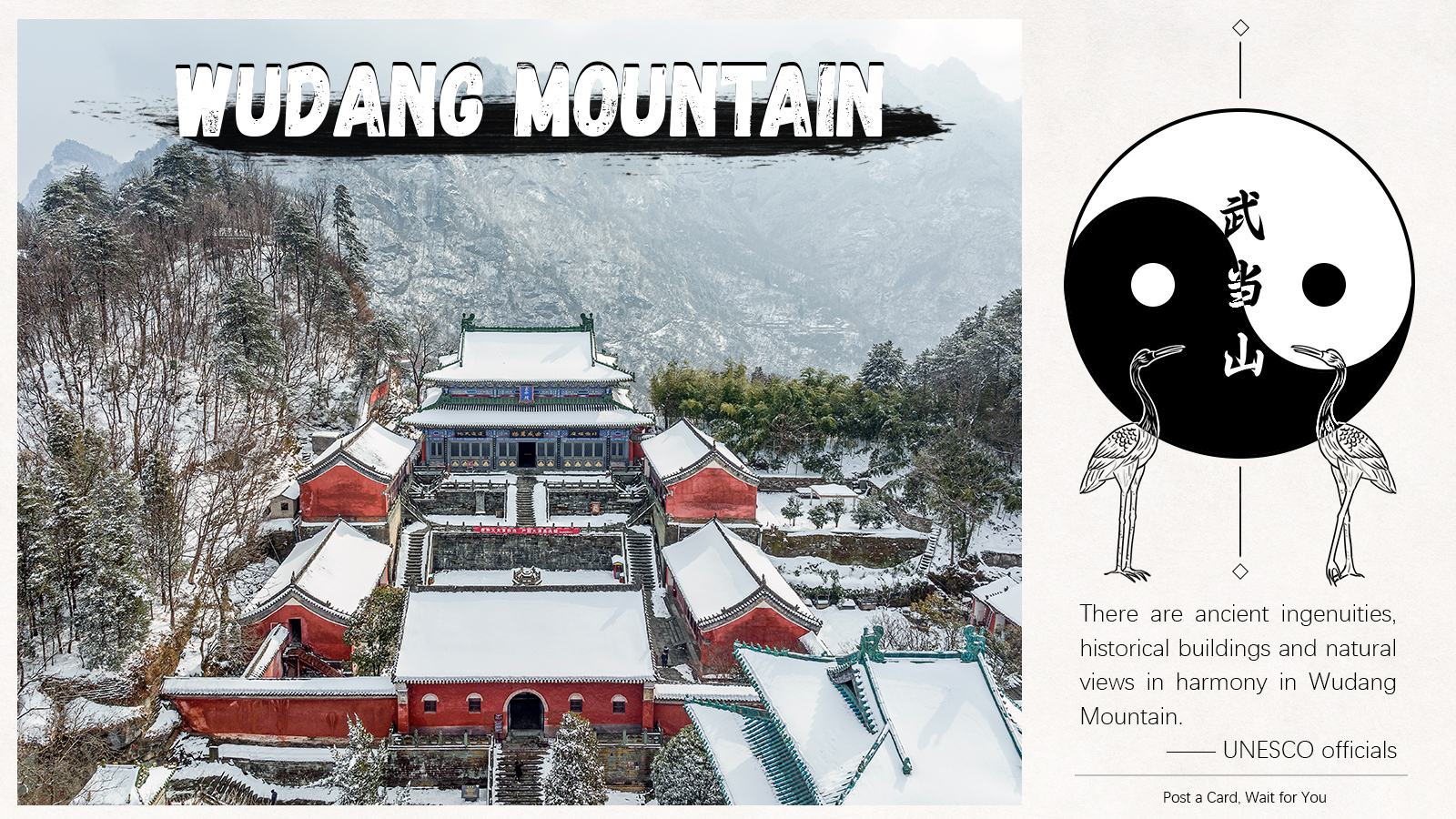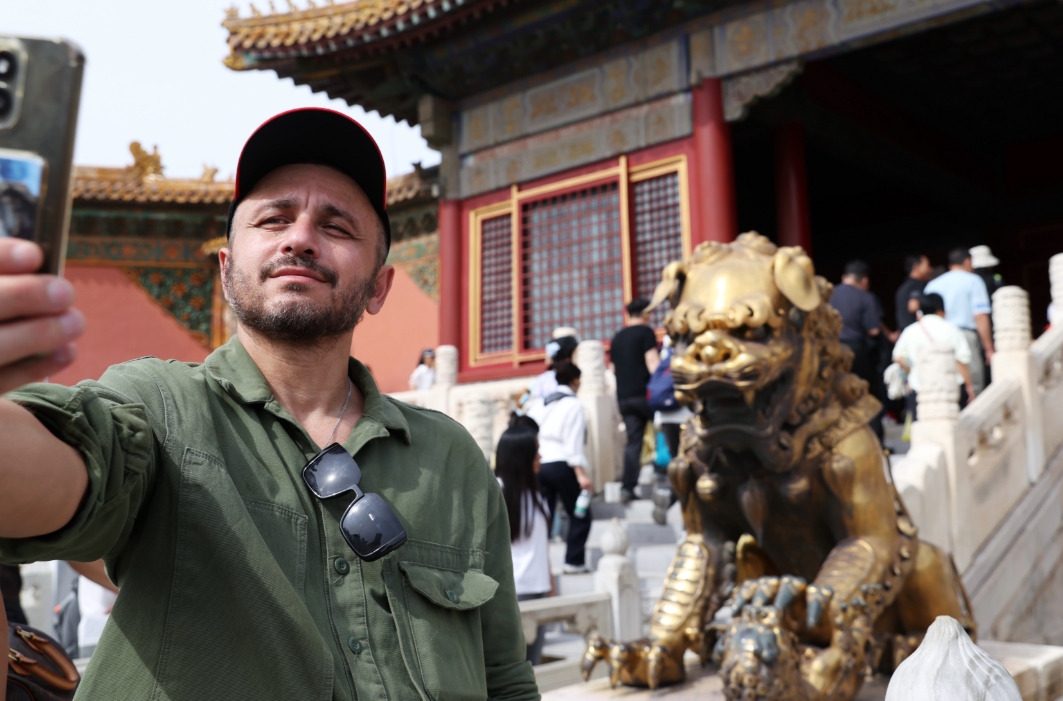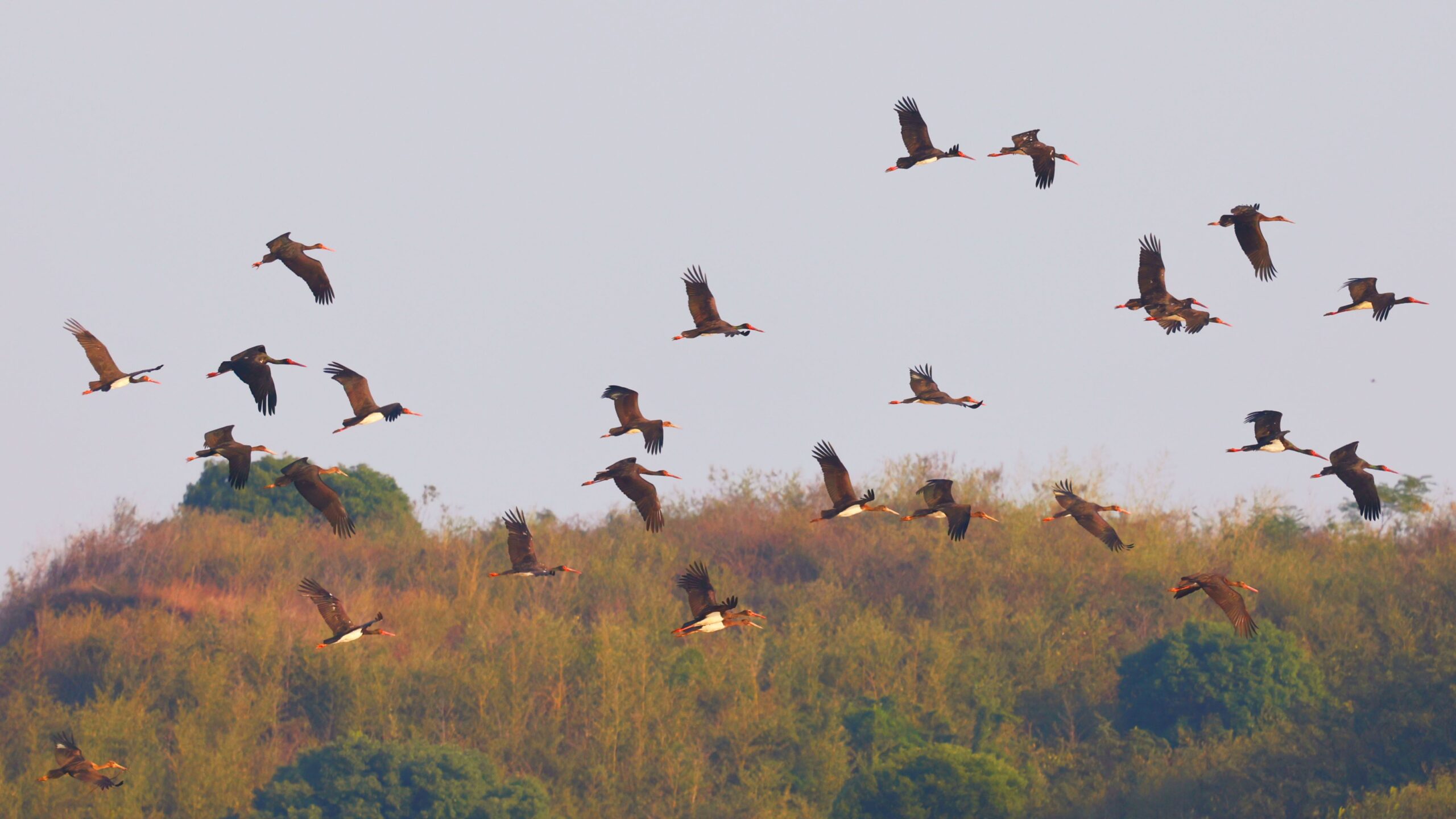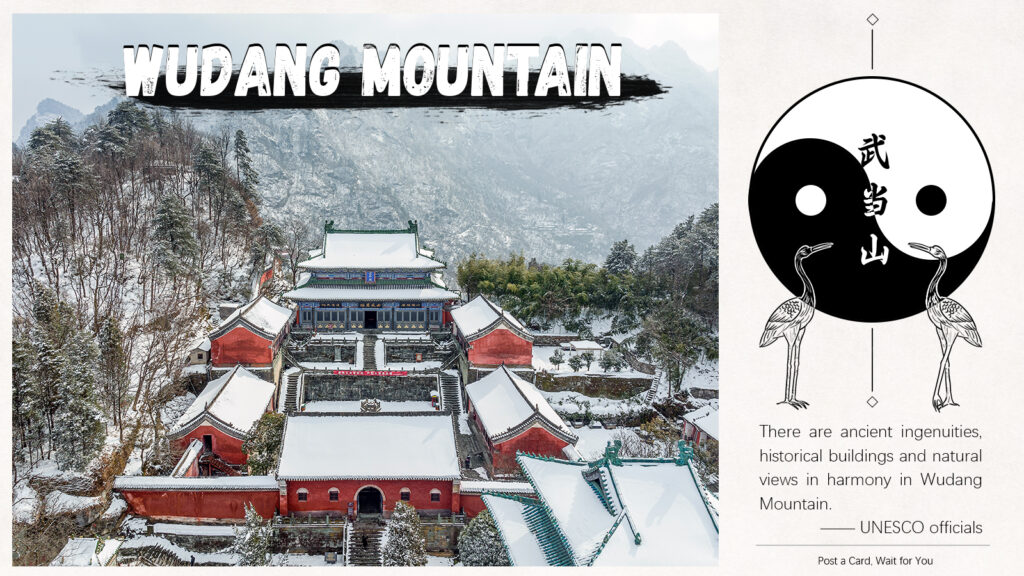
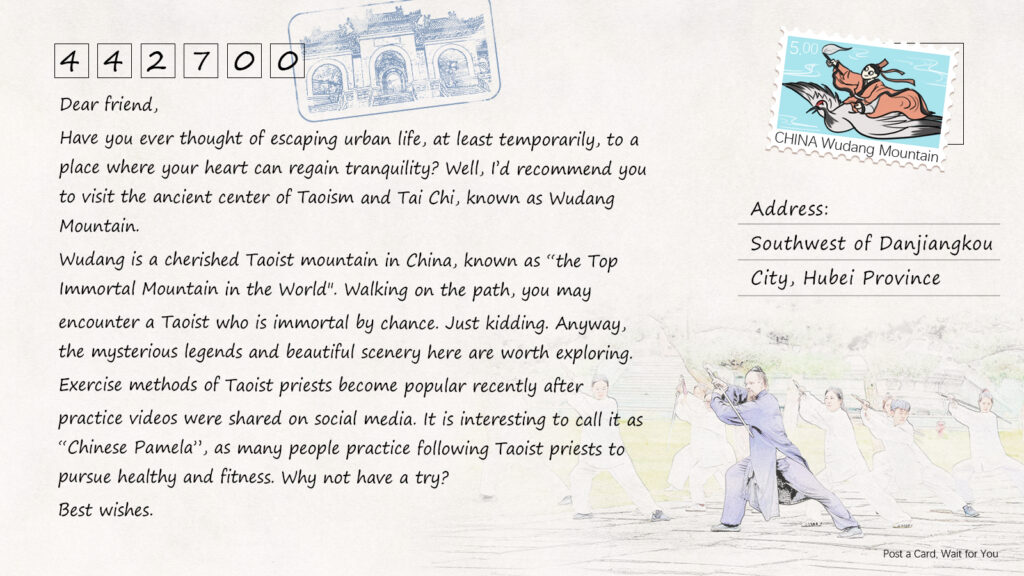
Wudang Mountain is on the list of must-visit-place for many overseas tourists, including Europeans.
Wudang Mountain is perhaps the best known of China’s Taoist holy mountains, which is also an important destination for Taoist pilgrimages. The site comprises Taoist buildings from as early as the 7th century. It also represents the highest standards of Chinese art and architecture over a period of nearly 1,000 years.
UNESCO listed the mountain as a World Cultural Heritage Site in 1994. The Mountain often appears in various Kong Fu films. The Wudang School is a fictional martial arts school in several works of Chinese wuxia(武侠) fiction. And the Wudang Sect (武当派) in Wuxia is often portrayed as the counterpart to Shaolin (少林), which is an important Buddhist place in China.
Wudang Mountain is well-known in the world for its art works, which is on the list of the must-visit-place of many overseas tourists. As early as 2007, along with the Great Wall, Wudang Mountain became one of the Top 10 favorite scenic spots in China that Europeans want to visit.
In recent years, cultural exchanges between Wudang Mountain and overseas countries have been on the rise. People around the world are becoming interested in Tai Chi, qigong, Wudang martial arts and Taoist culture. At the same time, foreigners rush to Wudang to learn martial arts, or “Xiuxian” (修仙 in Chinese), which means cultivating oneself to become an immortal.
Foreign Disciples in Wudang
According to the Chinese News Service, over 20,000 “foreign disciples” have registered at Wudang. The number of short-term foreign students is also increasing. Over 7,000 “foreign disciples” are persisting in studying Taoist culture on Wudang all year round.
Marc Verlant from France, 65-year-old, is one of them. He initially started to learn Qigong to treat his body after an accident. Later, he began to learn Wudang Tai Chi, and gradually fell in love with Tai Chi and Wudang’s culture. Now, he regards Wudang as his second home. “Some locals say that I am almost a native of Wudang,” he said.
Written by Liu Sha, pictures created by Wang Di.
If you liked this article, why not read: Make wishes @Mount Wutai, Manjushri’s earthly abode

